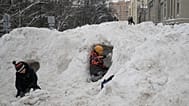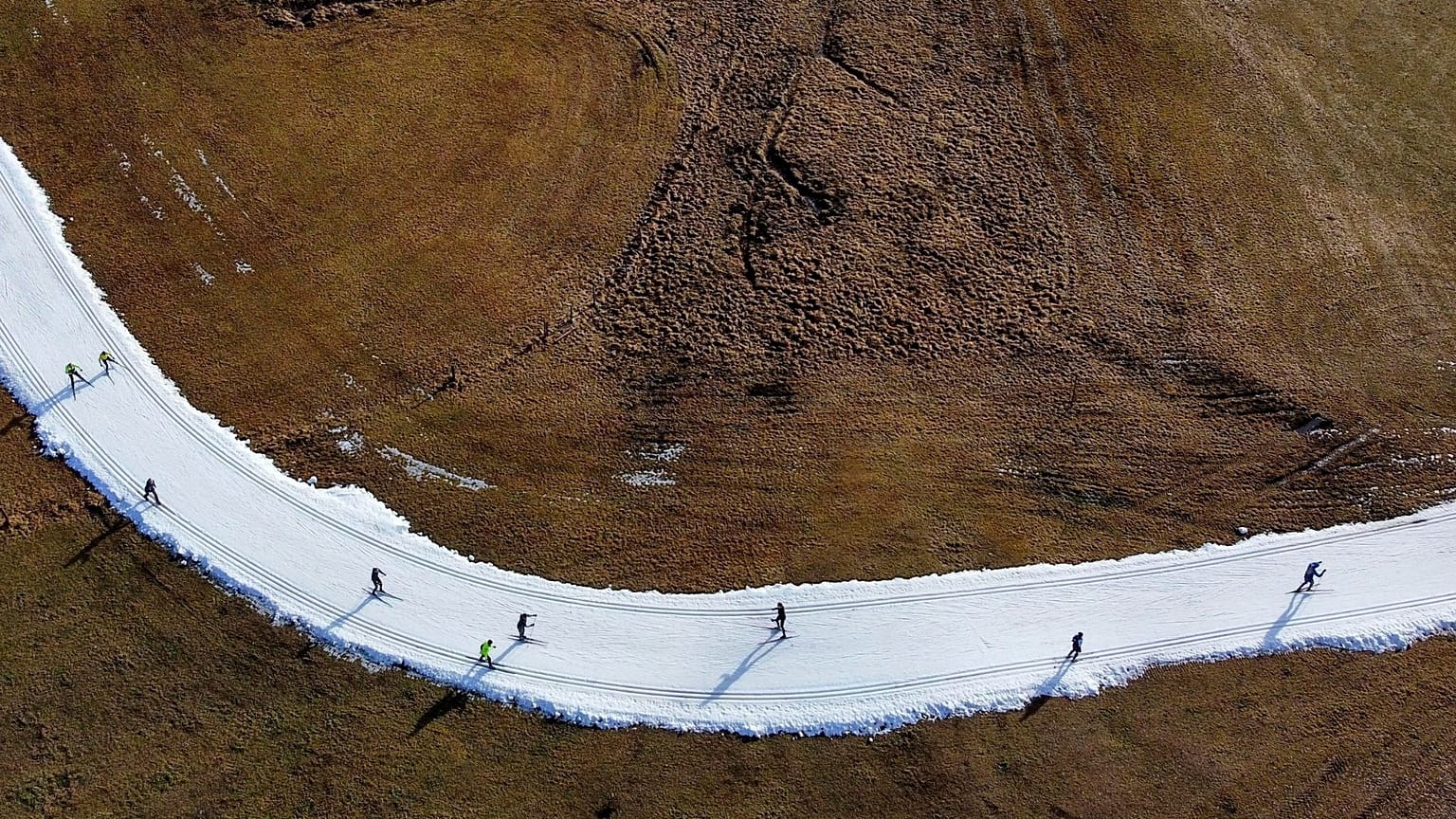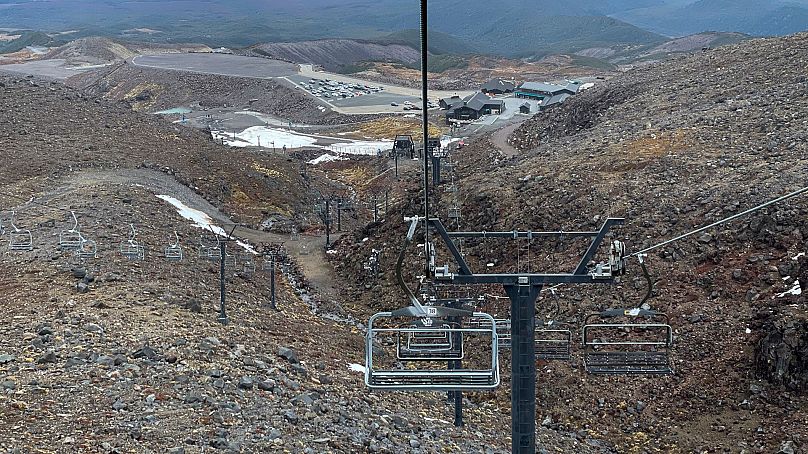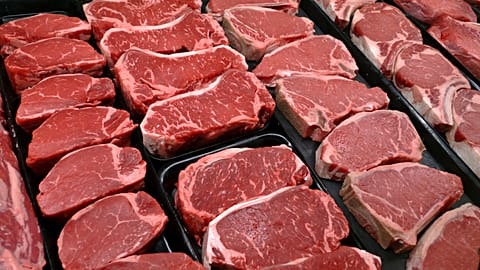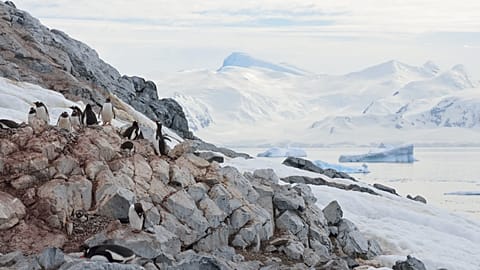Half of Europe’s ski resorts to face ‘very high risk’ of snow scarcity in a two degree warming scenario, new research has found.
Climate change could devastate European skiing, with more than half of Europe’s resorts at ‘high risk’ of snow-scarcity by 2100.
Europe’s snow-capped mountains are an iconic part of the continent’s landscape and tourism industry.
But 53 per cent of European resorts are likely to suffer from poor snow cover if temperatures rise by 2°Celsius, research published in Nature Climate Change has revealed.
Current policies mean the world is on track for 2.7C of global heating.
At 4C of warming, 98 per cent of resorts would be at ‘high risk,’ the researchers warn.
Snowmaking will only partially offset the decline, the team of experts warn, and would involve machinery like snow blowers that generate more of the same greenhouse gases that are heating up the globe in the first place.
“Snowmaking … epitomises some of the key challenges at the nexus between climate change adaptation, mitigation and sustainable development in the mountains,” the study authors write.
How is climate change impacting the ski season?
Repeated and increasing wintertime thaws have saddled many European ski resorts in recent years, leaving many slopes worryingly bare of snow.
Along with glacier melt, snow shortages have become a visible emblem of the effects of climate change. Everything from tourism to pro ski competitions have felt the effects.
The new study suggests things could get much worse.
With the rise in global temperatures already flirting with the target limit of 1.5 degrees under the 2015 Paris Agreement, and a higher climb seemingly inevitable, the researchers analysed the impact on more than 2,200 ski resorts across 28 European countries.
The research evaluated changes in snow cover across a range of increases in temperature: 53 per cent of ski resorts in Europe would face “very high risk of insufficient snow” at a rise of 2 degree Celsius. Nearly all - 98 per cent - would face that level of risk if the 4-degree bar is surpassed.
Even with use of artificial snow, more than a quarter of the resorts would still face snow shortages if temperatures rise by 2 degrees, and more than 70 per cent would if they climb by 4 degrees, the forecasters said.
The researchers say their paper goes further than previous country-specific studies and provides a first comprehensive look at the impact of snow shortages on the slopes across Europe, home to half of the world’s ski resorts.
“What this study also provides is an analysis of the water requirement, electricity requirement, and greenhouse gas emissions that are associated with snowmaking,” said co-author Samuel Morin, a researcher with weather forecaster Meteo France.
How will ski resorts cope with rising temperatures?
As with most efforts to combat climate change, tourism officials and government leaders will likely need to respond with a mix of attenuation - trying to keep temperatures from rising - and adaptation: changing behaviour for a new reality in places like Spain's Pyrenees, Norway's Mount Trysilfjellet, the Swiss Alps, or Turkey's Erciyes resort.
This will include snowmaking - and reducing the emissions of snowmaking.
“In the tourism sector, if we want to limit the extent of the consequences (of climate change), we must also be concerned about limiting the carbon footprint of this activity — and therefore do everything possible to massively reduce greenhouse gas emissions for the entire sector," Morin said.
Ruth Mottram, a climate scientist at the Danish Meteorological Institute, commended the use of renewable snowmaking. But she noted that transport to ski slopes is an important source of emissions - and greener snowmaking will have no impact on that.
“Overall, it looks like European skiers will be able to continue skiing, but the activity will migrate further north and higher up the mountains, even with additional investment in snowmaking,” Mottram wrote in an email.
Resorts also need local modelling
Many ski resort operators - in Europe and beyond - are already getting the message, and may need to do more.
Anita Verpe Dyrrdal, a research scientist at the Norwegian Meteorological Institute, said the study's prediction for a drop in “snow reliability index” in Norway was in line with national assessments. She applauded the research for its snow modelling and energy production estimates, but acknowledged it might overlook some specifics.
“My concern is in the spatial resolution of the model simulations, which, especially in topographic regions, might be too coarse,” she said, alluding to sharp changes in altitude that might not be seen in the researchers' modelling, such as near Norway's fjords, or wind conditions that could cause snow to drift.
“Local snow modelling might be important in some regions where local effects play a big role,” she said.
For skiers, the study suggests higher - and colder - destinations may be required to get to the best slopes, and suggested one takeaway from the study was that resorts that assess their local conditions and adapt as necessary might in fact lure more skiers in the years to come.
“The most robust ski locations in the future might attract even more tourists?” she mused.

